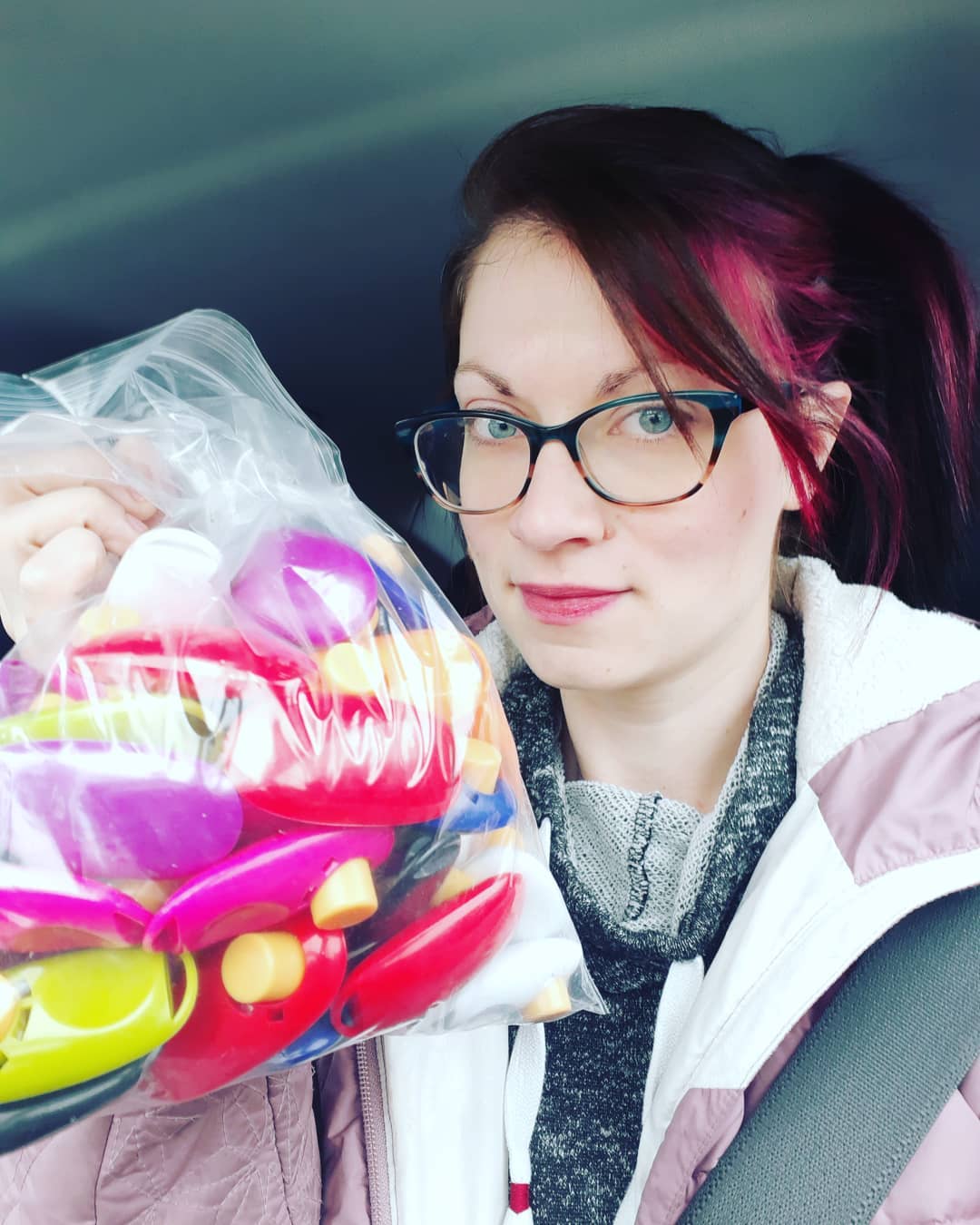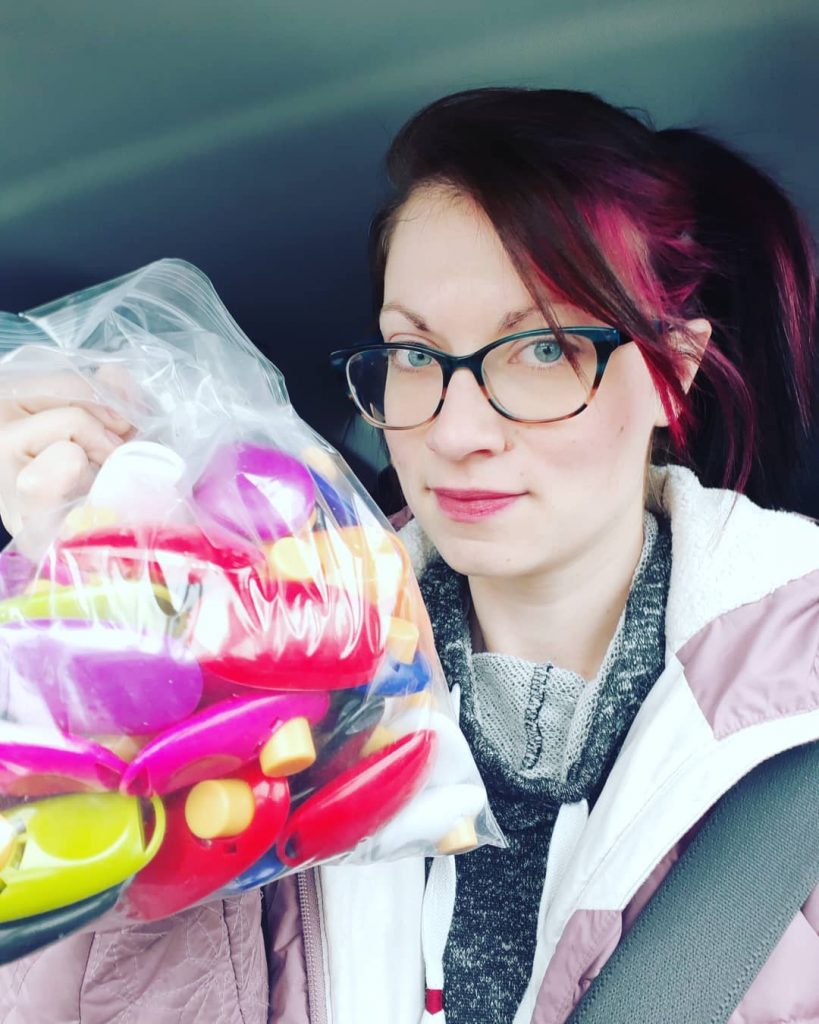What the heck is clicker training?
Clicker training is a way of training an animal (for our purposes, a dog) using a marker – in this case, a clicker. A clicker is simply a little noise maker; like the sound of clicking the top of a pen. When I call it a marker, that is because we use it to mark the behaviour we are looking for from our dog. Clear as mud? Good.
Here’s an example: I am teaching my puppy to sit. I cue the behaviour – “sit!” – and the second his butt hits the ground, I *click* to mark the behaviour, then I give him a treat. So the click happens as he does the thing I wanted to mark that was what I was looking for.
I’m going to stick to mostly layman’s terms here, and keep this as simple as possible. Other trainers reading this, don’t come at me! I’m going to explain simply and give some basic rules – and yes, for every rule there can be an exception, but we don’t need to argue it here.
Rules of Clicker Training
A couple of main rules that are important to remember:
- The click happens when the dog does the behaviour you are looking for.
- If you click, you treat your dog. Sometimes, you might click by accident, or you thought your dog was about to sit so you click but they don’t actually do it. It’s fine; give them a free treat. I would rather your dog learn the clicker is god than learn that you’re a liar. If you click, you treat.
See? Not so complicated after all!
Why Clicker Train?
Clicker training helps bring clarity to your dog. When we train using a clicker, it helps communicate to our dogs exactly what we are looking for. Here is a good example:
Let’s say I am trying to teach my dog to “sit pretty” – you probably know what this one looks like: sitting, both paws up? Without a clicker, I say “sit pretty!”, my dog does it, then puts their paws down again and gets a treat. Which part of that sequence did they get the treat for? With a clicker, I cue my dog, “sit pretty!”, paws go up, I click, their paws go down, they come get their treat. Same sequence of behaviour, but the clicker trained dog knows exactly which part of the sequence they got the treat for.
Getting Started with Clicker Training
The nice thing about clicker training is it is super easy to get started, and can cost absolutely nothing. If you don’t have the budget for training tools, use a pen and click it, as mentioned above, or you can make a click noise with your tongue (I’m awful at this but if you are capable, more power to you). If you want to invest in a few of my favourite tools to make your life easier, go for it. Here’s what you need:
- Clicker! I am partial to an i-click, because I like the ergonomics of it. It feels nice in your hand, and has a nice sound – not too loud, for our noise sensitive dogs. However, there are a ton of clickers on the market out there. Any will do!
- Treats! Lots and lots of tiny treats. Think the size of a pea. You can use whatever works for your dog. If they’re a super crazy food hound (I’m looking at you, labs!), you can just use their normal kibble. For my dogs, the favourite training treats are diced up hotdogs or cheese. Freeze dried liver is always a winner too, and less messy than hotdogs or cheese.
- Treat pouch! If you’re on a budget, this can just be a bunnyhug style hoodie or an apron with pockets. If you want to invest in a good one, I am partial to Terry Ryan’s treat pouch. It is build solid (mine has lasted me years), has a wide enough opening to easily get your hand in and out, but the opening will snap shut easily if you want to close it or have a nosy dog trying to mug you. Plus, bonus, it comes in purple!! And black. But I have a clear preference.
- Dog (or cat or other animal)!
reinforcement-based technology is that at least as far as animals and children go, we now have a realistic way to keep them and take care of them and teach them without automatically using fear.
– Karen Pryor, Reaching the Animal Mind
Clicker Training Really is That Easy
Go, do, try! Watch your animal learn; one of my favourite parts of training is watching those gears turn in my animal learner’s head as they problem solve and the joy when they piece things together. You can just start. Introduce the clicker and try it. It isn’t rocket science, and you won’t break your dog if you make mistakes and fumble your click sometimes. The mechanics can take some time to get down, and that’s okay. Dogs are very forgiving learners.
Feeling stuck? Here are a couple easy inspirations to get you going.
- Clicker train something your dog already knows. Try using it for sit. It’ll let you practice and get comfortable, and let your dog figure out what the clicker means.
- Capture a behaviour! Does your dog do something you like? Perhaps when they relax calmly on their dog bed, or when they do a cute head tilt? Have your clicker handy and treats in your pocket, and just watch your dog. When they do it, click and treat. Capture them doing something they already do and you like using clicker training.
- Play the 101 Things to Do with a Box game.
Since this is a 101-how-to, I’m going to leave it there for now. Maybe another time I’ll do an advanced clicker training post, and we can talk about all the fancy things like verbal markers, non-food reinforcers, no reward markers, shaping, and so much more clicker related fun.
Confused, stuck, or frustrated? Hit me up in the comments and I’ll help.
Happy training out there!
Links in this post are affiliate links, but I promise you I wouldn’t be linking them if I didn’t personally use and love them.



Thank you so much for the beginner instructions. I’ve had dogs for many years but this one is a busy baby and so clever…so pl much personality and needs these guides. Bless you for sharing.
Glad you enjoyed it! Busy pups with big personalities end up being the best dogs… once you make it through adolescence 😉♡